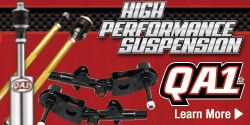Do I have this backward or the right idea?
Bigger main air bleed makes the boosters come in sooner but it’s richer down low, leaner up high.
Smaller main makes booster come in later and leaner, richer up high?
YES YES YES YES YES YES YES YES YES YES YES YES YES YES YES YES!
Now that you understand that you are on your way to being a carb tuner.
Where the booster starts is critical in getting everything timed up so you have enough overlap in circuits so you don’t have holes or dips in the fuel curve or equally as bad is too much overlap.
















